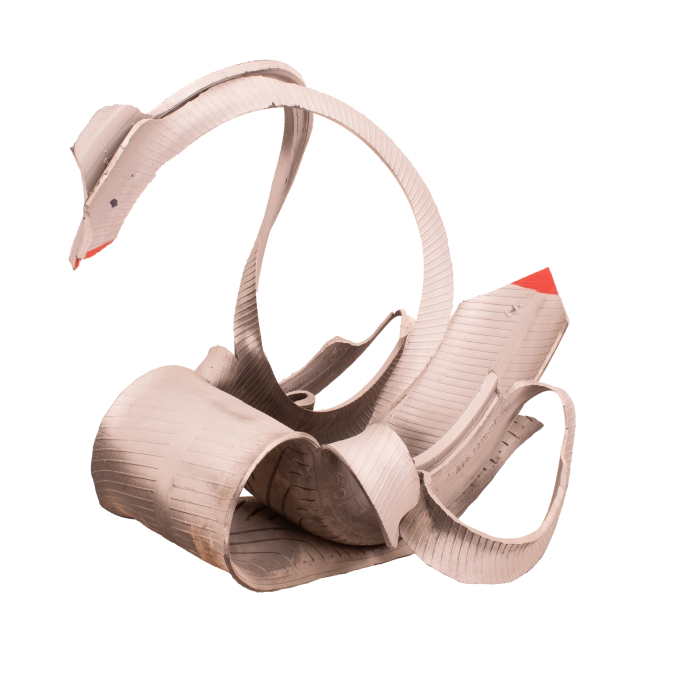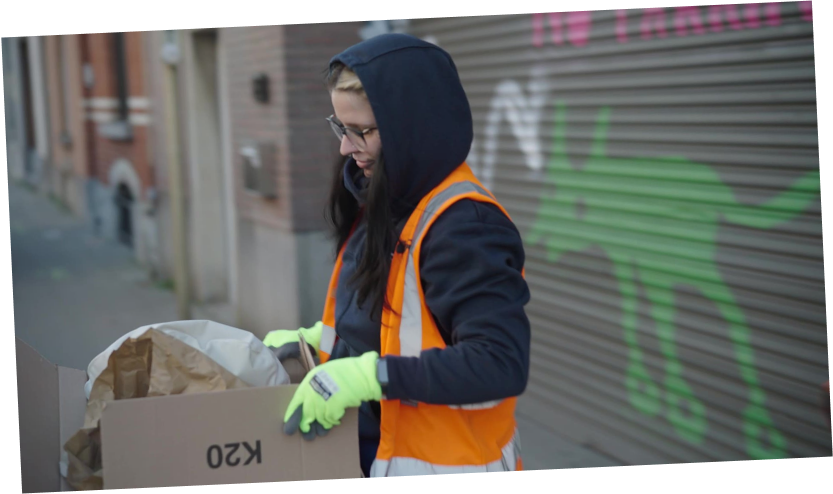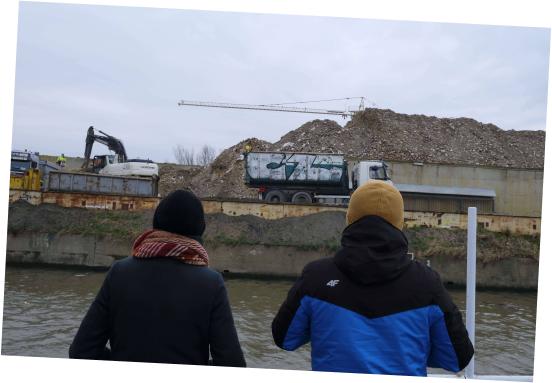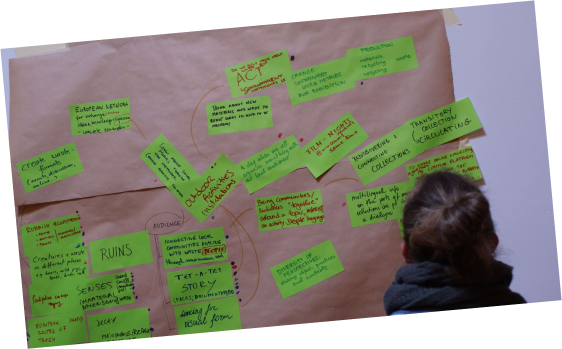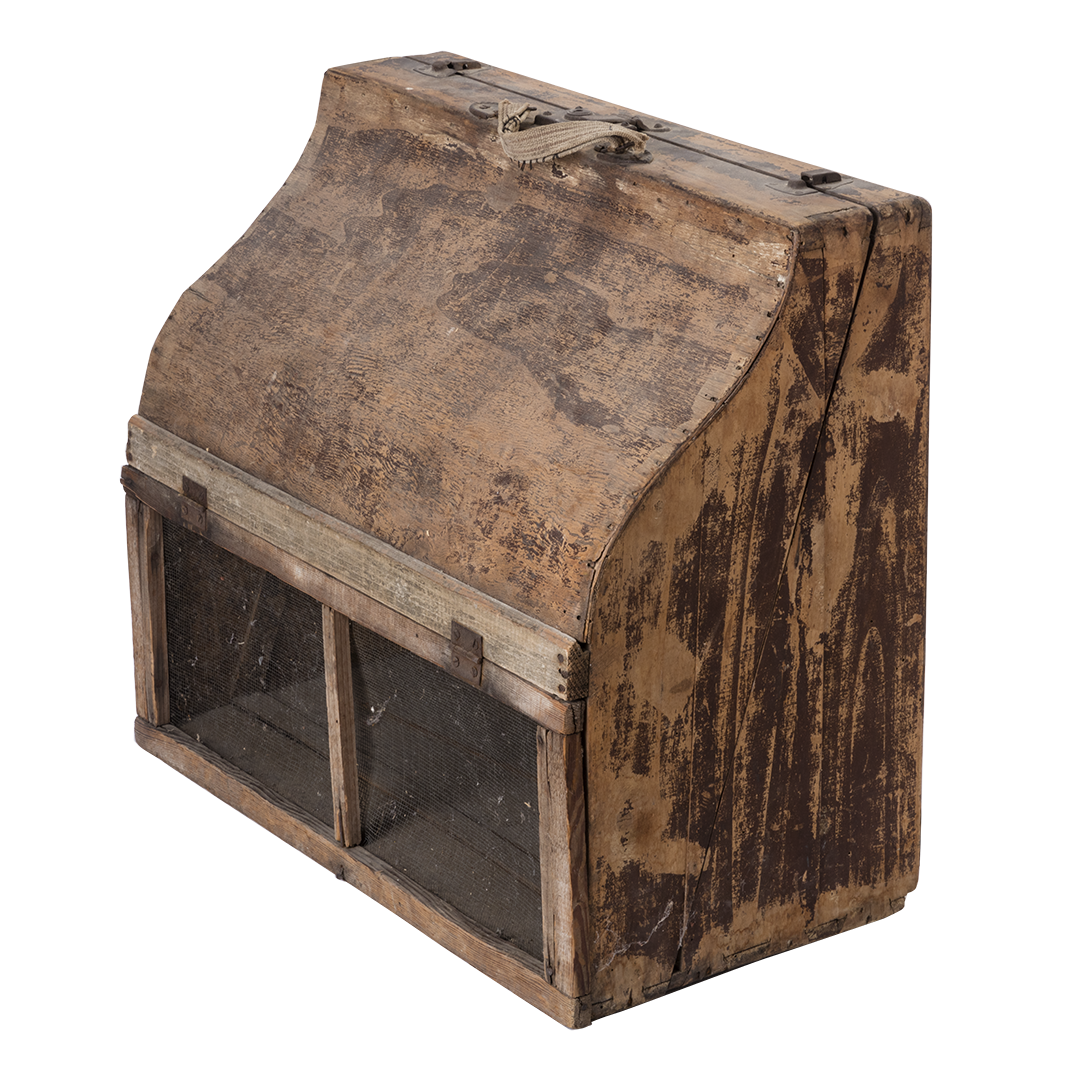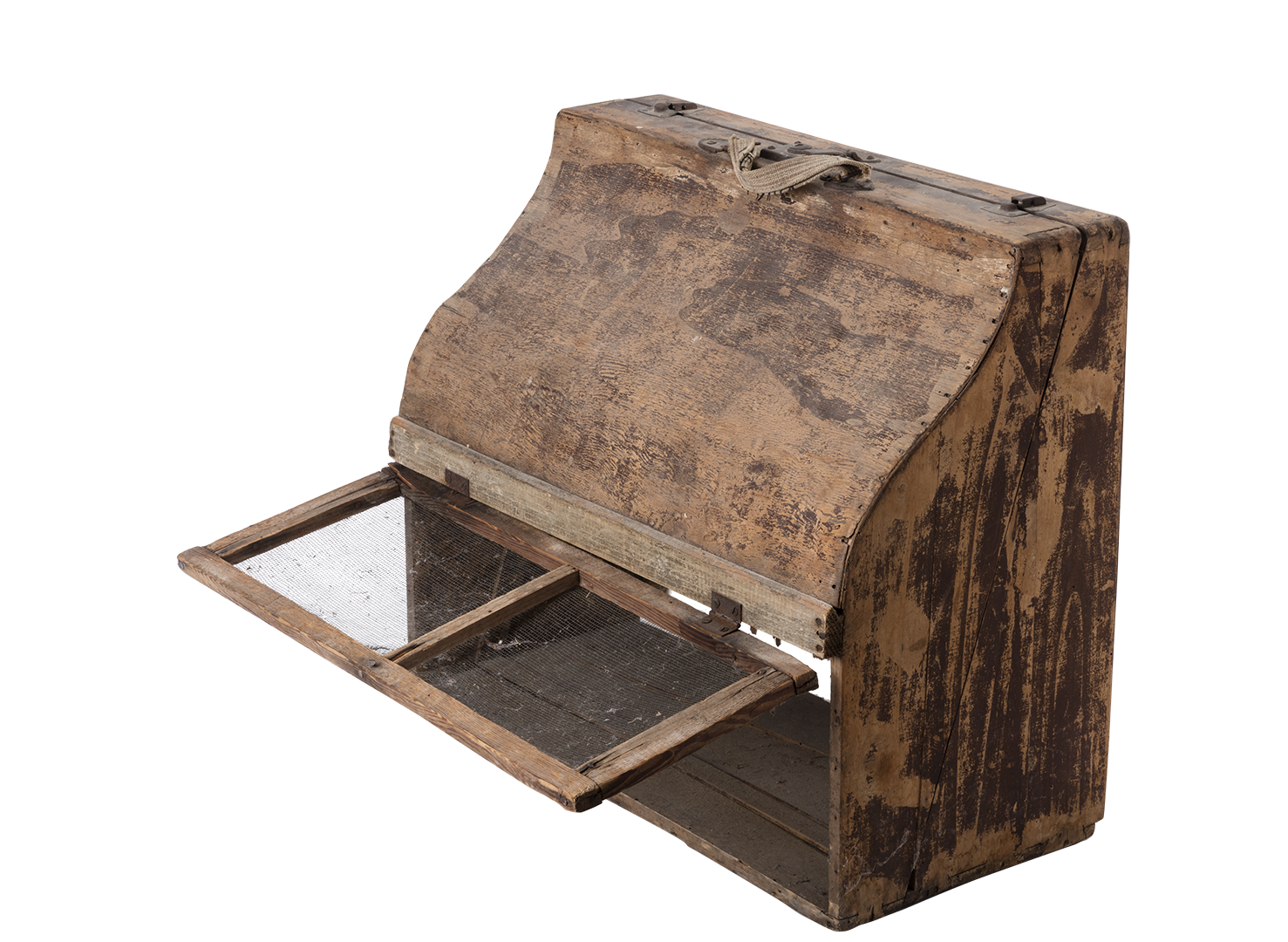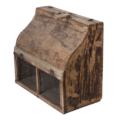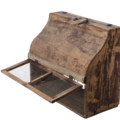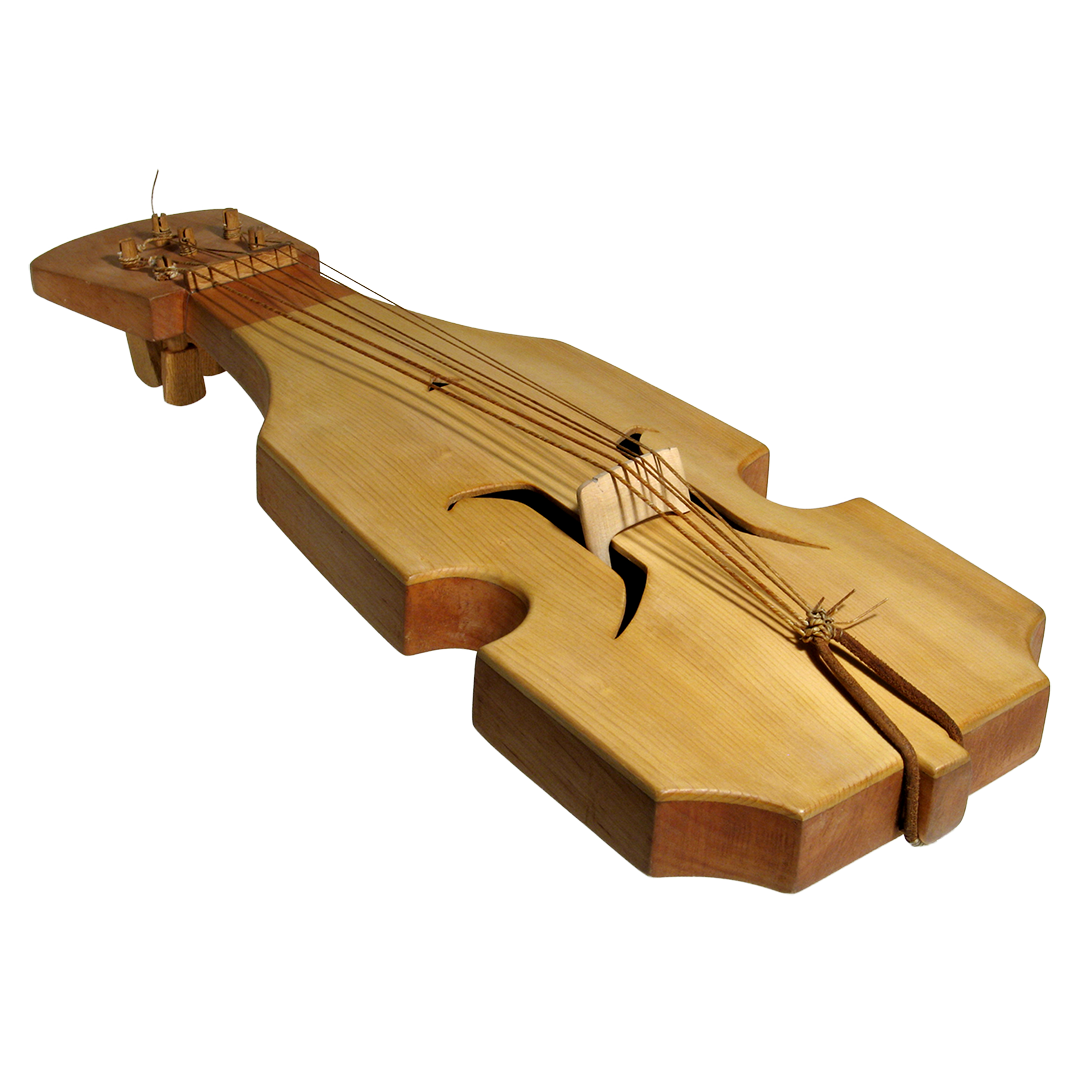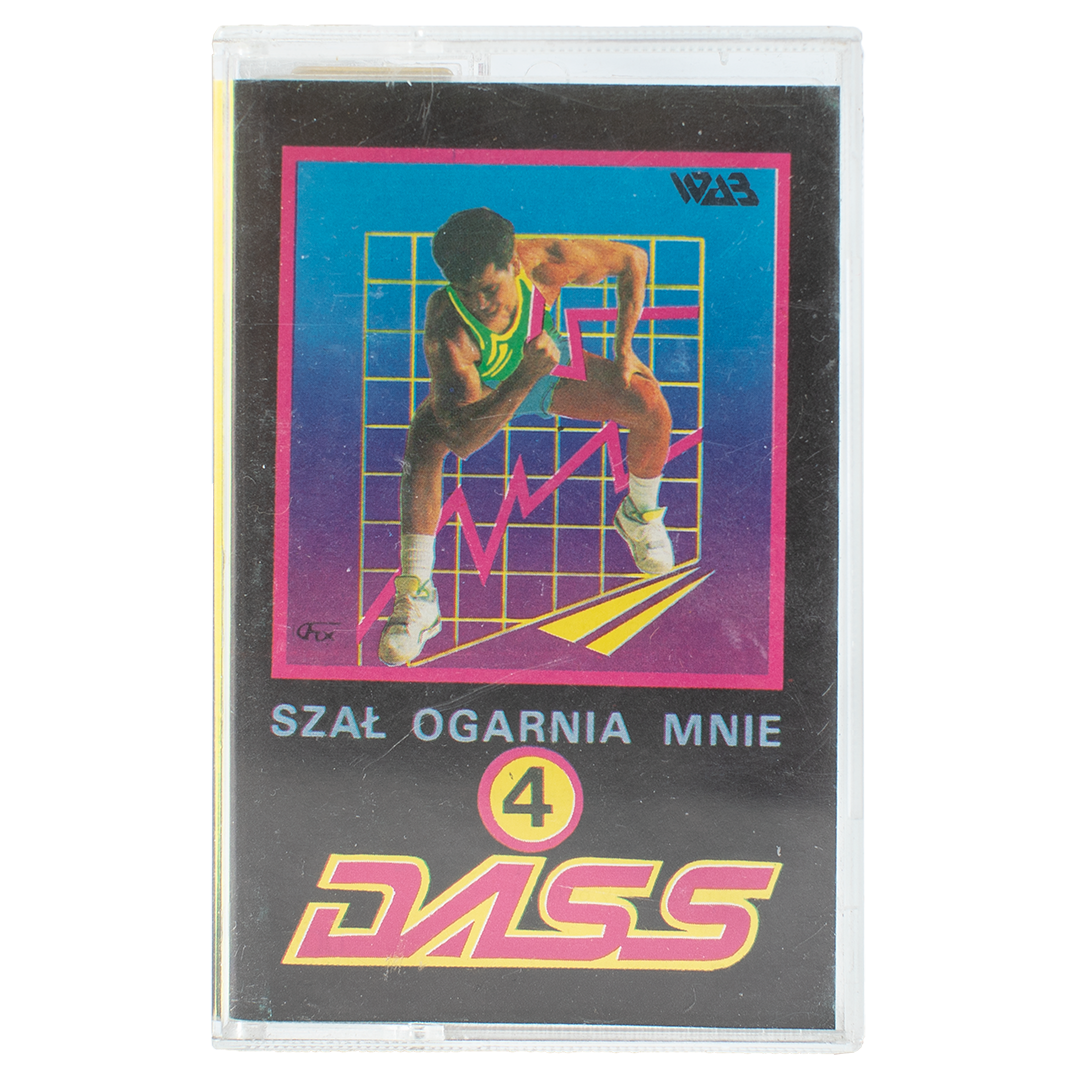Artist/Maker Unknown
Date Production/Creation
20th century
Entry in the museum collection
Post 1950
Place of origin
Ozzano Taro, Collecchio, Parma, Emilia Romagna, Italy, Europe
Current location
Ettore Guatelli Museum foundation, Ozzanno Taro, Italy
Material
Cage for transporting poultry made from an accordion case: assembly of wood, wire mesh and jute.
Dimension
(Cm): 47 (h) 26 (w) 54 (l)
Inventory Number 111
Keyword Reuse Music Self-made/DIY
Copyright @Fondazione Museo Ettore Guatelli
Status On display
Image Credit Mauro Davoli
Winging it. Daily life is full of little problems to be solved.
What is this object about, who are the people behind it?
What is so fascinating about this seemingly commonplace object? Ettore Guatelli feels that its value stems from the hands that so ingeniously altered its shape with the skill of a craftsman driven by need and able to see beyond its disposal and beyond the natural obsolescence of things. That is how an old accordion case became a cage for transporting poultry to market in neighbouring towns using an assembly of wood, metal and jute. According to Ettore it was most probably used to transport pigeons for sale.
What places is this object related to, how European/transnational is it?
It was in 1994 that Ettore Guatelli published an essay entitled "Waste at the Museum" in the fifth issue of the periodical "Ossimori". In it, he reflected on the major and now very current need, which is fast becoming an emergency, to think about waste, driven by a philosophy of recovering and recycling materials and refuse, viewing this, and even more so waste dumps, as an instrument and a place for implementing a genuine "democracy of history".
Why and how did this object arrive in the museum’s collection?
Starting in the 1950s Ettore Guatelli began visiting the waste collectors’ warehouses in the Apennines area increasingly regularly, and little by little what would later become his museum began to take shape. From the mid-1970s onwards, Ettore Guatelli’s collection of objects grew considerably, becoming an unwitting part of the movement for the revival and promotion of popular culture that genuinely flourished in the 1970s and 80s to become one of Italy’s most unique demo-ethno-anthropological museums of the 20th century.
What is the relation of this object to waste?
The marvel of the objects in the Guatelli Museum is precisely their everyday nature which reflects the ordinariness of a life we live each day, but to which we all too often forget to attach importance and which we blur with apparent obviousness. Ettore Guatelli himself said he was removed from the distinguished authors with whom he was often compared because, as his work dictated, he felt more humanly close to the work of craftsmen and workers, to the know-how that their hands and movements incarnated, to their "incredible virtuosity", to their being artists of the everyday world, on which he drew and for which he created.

